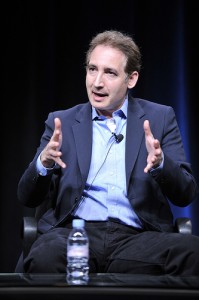 Brian Greene’s current four-part series on “Nova,” explaining prevailing, mindblowing theories of quantum physics, “The Fabric of the Cosmos,” takes time tonight to explain how the past, present and future can exist simultaneously or how completely different realities can be concurrently happening on parallel universes.
Brian Greene’s current four-part series on “Nova,” explaining prevailing, mindblowing theories of quantum physics, “The Fabric of the Cosmos,” takes time tonight to explain how the past, present and future can exist simultaneously or how completely different realities can be concurrently happening on parallel universes.
In essence, it explains a lot of the underpinning of the more compelling TV dramas of recent years, from “Lost” to “Fringe.”
And while “Fabric of the Cosmos” does its best to use vivid visual explanations, it doesn’t turn to those series for its ready examples.
“The bottom line is: I’m really committed to trying to bring these ideas to a wide audience,” Greene told reporters at press tour a few months back.
But when I told him how much his theories helped explain “Lost,” Greene admitted, “The thing is we don’t have a television.
“I got these two little kids, and there’s so much nonsense on television that we never turn it on. So we don’t actually have one.”
However, he said, the popularity of those shows indicate people are open to such ideas. “I’ve come to realize that there is this largely, I think, untapped hunger in the general population to know what’s happening at the forefront of science and moreover to have those ideas feel kind of meaningful and relevant and exciting.”
It certainly helps the image of the scientists, he said. “You normally think of scientists as sort of aloof and foreboding, and you really don’t want to go near them, with this character who sort of thrusts himself into all of these interesting situations.
“So I think there is a way in which science has always had tentacles that reach far and wide, but certainly recently, we find that they are taking more root in popular culture in other ways, and I think that’s a good thing.”
“The Fabric of the Universe” series plays on “Nova” at 9 p.m. on PBS (check local listings).